Piles of paper on your kitchen counter, overflowing mail slots, and a digital desktop cluttered with unsorted files. Does this sound familiar? In a world increasingly driven by digital convenience, the physical paper trail persists, often merging with a chaotic digital counterpart. Managing this dual influx of information feels overwhelming, leaving you with a sense of disarray and a constant search for crucial documents. But imagine a home where important papers are easy to find, bills are paid on time, and your digital files are secure and accessible. You can achieve this organized reality with practical, realistic systems.
This guide equips you with actionable strategies to conquer both your physical and digital paper clutter. You will learn to establish efficient `home filing system`s, streamline incoming paperwork, and create a robust `digital organization` hub. Prepare to transform your paper chaos into calm, bringing peace and efficiency back to your living space.

Understanding Your Paper Problem: The Why Behind the Piles
Before you tackle the clutter, identify its sources. Recognizing where and why paper accumulates provides valuable insight, helping you implement effective solutions. Your paper problem stems from several common culprits, creating both visible and hidden piles throughout your home.
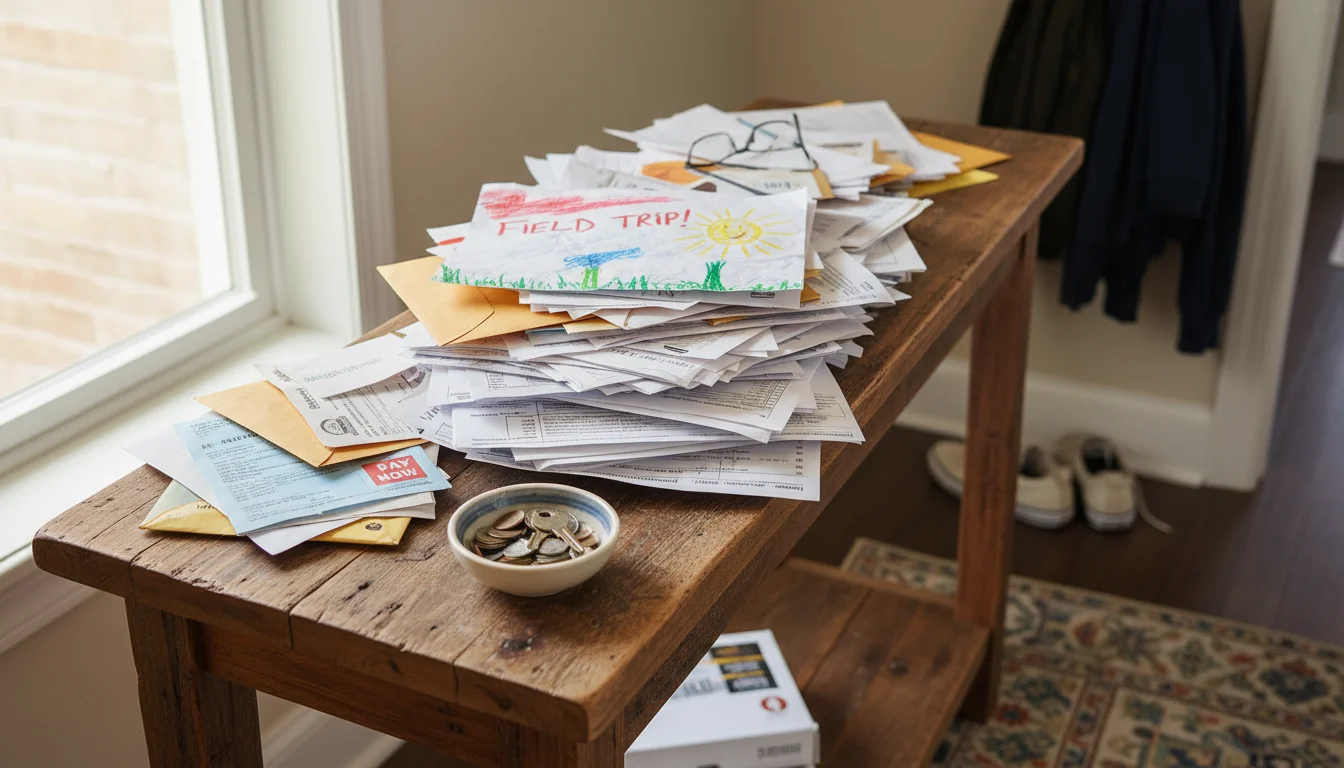
Common Sources of Paper Clutter
- Daily Mail: Junk mail, advertisements, catalogs, bills, statements, and magazines arrive daily, often landing in a single messy pile on a table or counter. Without an immediate processing system, this stack quickly grows.
- Children’s Papers: School notices, artwork, permission slips, report cards, and homework flood your home, often creating specific “kid zones” of clutter. These documents require sorting for sentimental value, immediate action, or shredding.
- Financial Documents: Bank statements, credit card bills, investment summaries, and tax documents accumulate. You need these for record-keeping and tax purposes, but often struggle to find a dedicated, organized spot for them.
- Medical Records: Explanation of Benefits (EOBs), doctor’s notes, prescription information, and test results add to the paper load. These sensitive documents demand secure storage and easy retrieval.
- Household Papers: Appliance manuals, warranty cards, insurance policies, home improvement receipts, and utility bills form another category of essential papers. You often need these only occasionally, but their absence causes significant stress during specific situations.
The mental burden of disorganization often outweighs the physical space these papers occupy. You waste valuable time searching for documents, miss deadlines because bills get lost, and experience anxiety from the visual clutter. Studies show that disorganization impacts productivity and increases stress levels. A clear `home filing system` directly combats these issues, leading to a calmer, more efficient household.

The Case for Digital-First Strategies
Embracing a digital-first mindset offers significant advantages for your `paper organization`. Digital documents eliminate physical bulk, save space, and provide enhanced accessibility. This approach forms a cornerstone of modern home organization, though it requires thoughtful implementation.
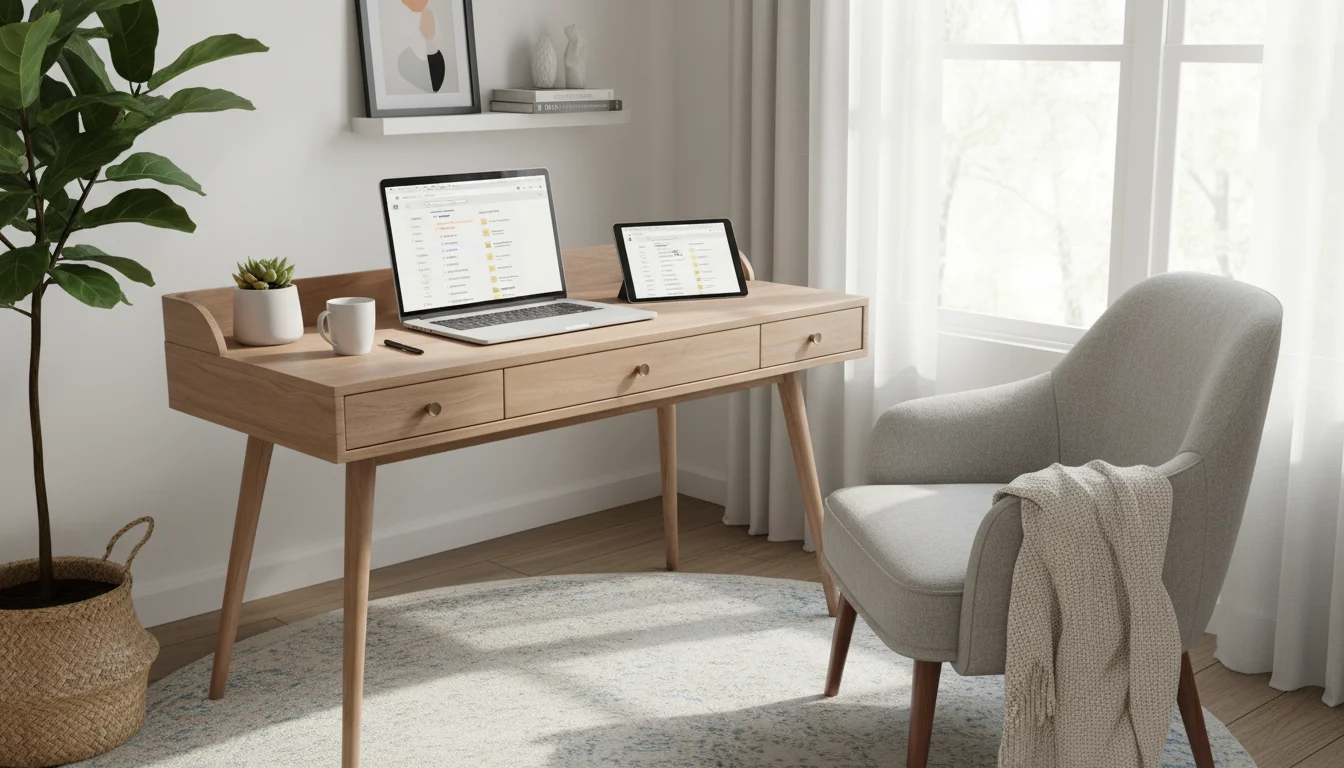
Benefits of Going Digital
- Space Saving: Digital files exist without taking up physical room. Imagine reclaiming shelves, drawers, and countertops previously dedicated to paper.
- Searchability: You can quickly locate specific documents using keywords, dates, or categories within a digital file system. This drastically cuts down search time compared to rifling through physical folders.
- Accessibility: Access your files from anywhere with an internet connection, whether on your computer, tablet, or smartphone. This proves invaluable for travelers or those needing information on the go.
- Backup and Security: Cloud storage services offer automatic backups, protecting your documents from physical damage, loss, or theft. Implement strong passwords and encryption for robust security.
- Environmental Impact: Reducing paper consumption lessens your environmental footprint.
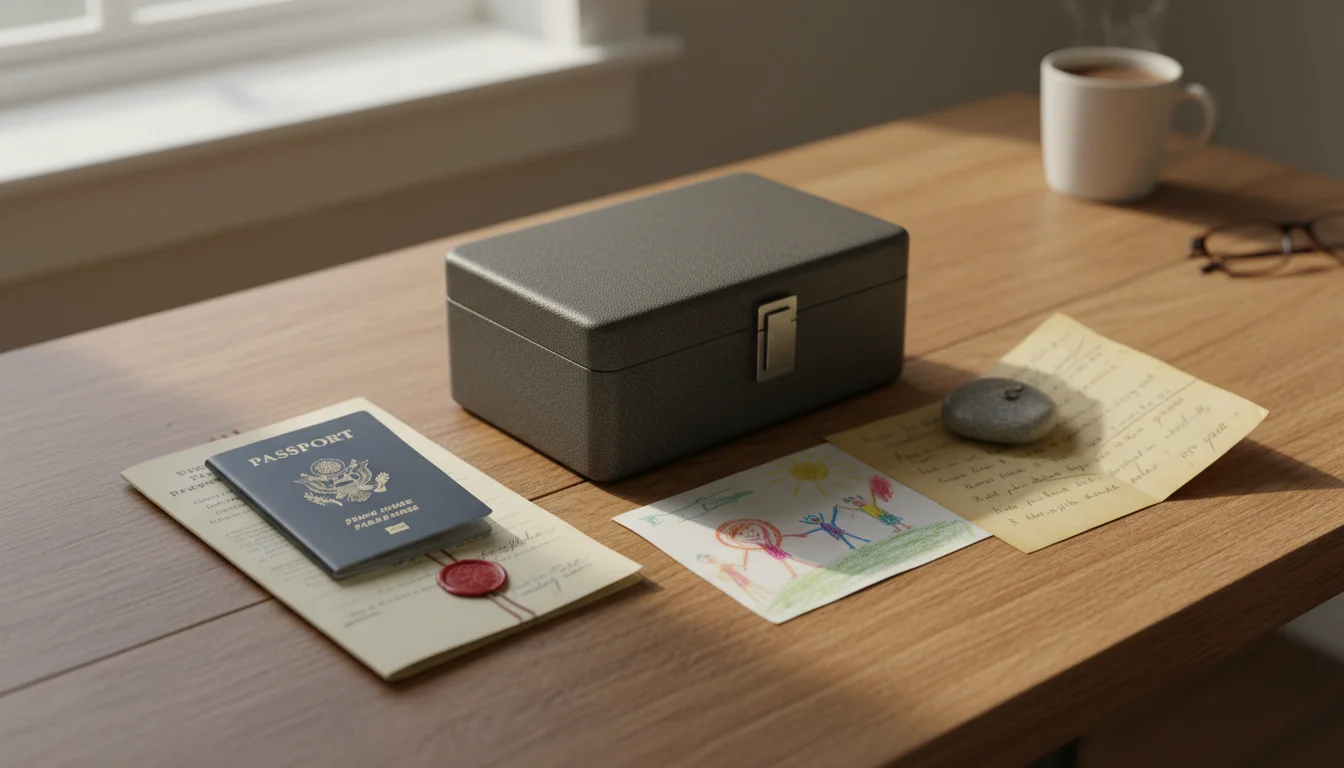
When to Prioritize Digital and When Physical is Still Key
While digital offers many benefits, some documents still require physical copies, or you may prefer them. Legal documents, like birth certificates, marriage licenses, passports, and property deeds, often require original physical copies. You should store these in a fireproof safe or safety deposit box. Additionally, some sentimental items, such as children’s artwork or handwritten letters, hold emotional value that a digital scan cannot replicate. You can still scan these for backup, but keep the originals.
Your goal involves creating a hybrid system that leverages the best of both worlds, reducing physical clutter while ensuring critical documents remain accessible and secure.

Setting Up Your Physical Home Filing System
Establishing a functional `home filing system` forms the bedrock of effective `paper organization`. This process involves a deliberate collection, sorting, and categorization strategy. A well-designed system ensures you know exactly where every physical document belongs, making retrieval effortless.
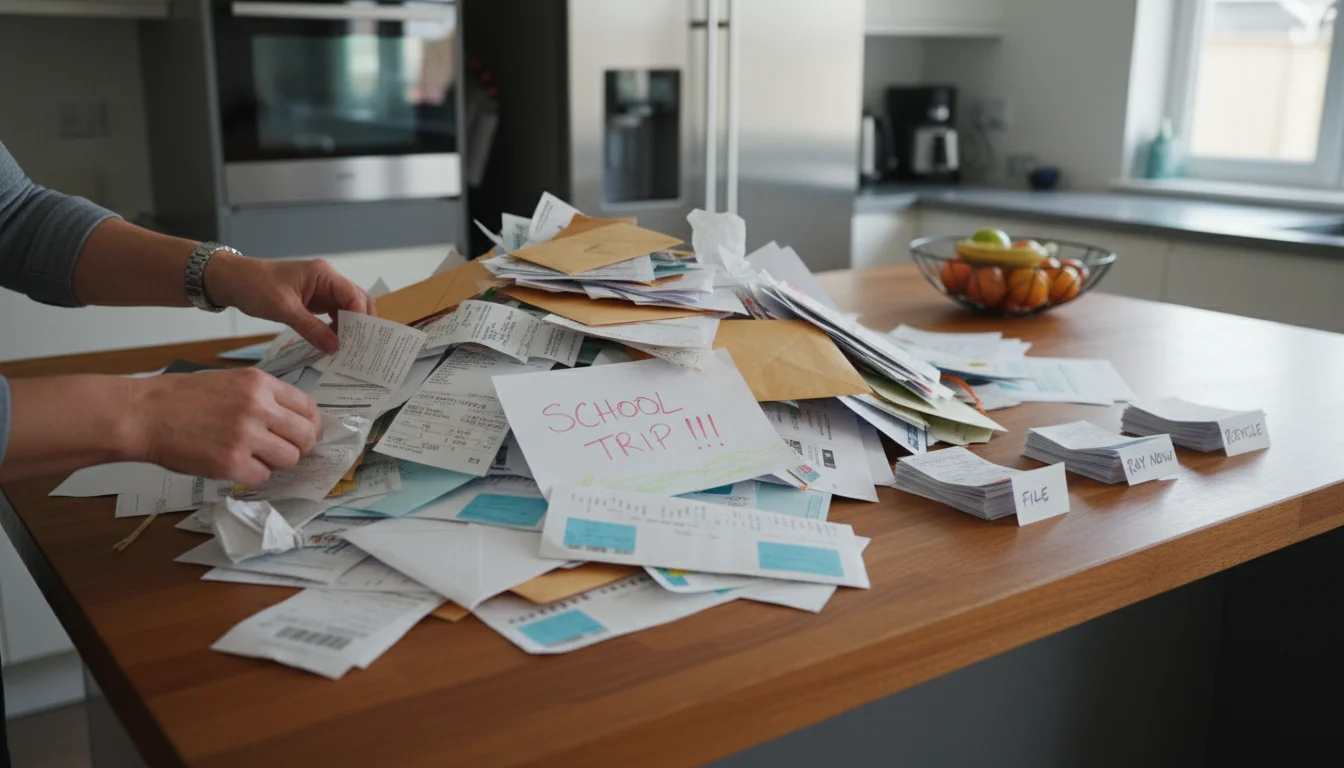
Step-by-Step Guide to Creating Your Filing System
- Gather All Paperwork: Collect every piece of paper in your home. Look in drawers, on counters, under beds, in bags, and across all surfaces. Create one central pile. This initial step can feel daunting, but seeing the full scope of your paper trail empowers you to tackle it comprehensively.
- Sort into Actionable Categories: Approach your paper pile with a clear mindset. Create four initial sorting piles:
- Keep: Documents you need to retain for legal, financial, or historical reasons.
- Shred: Papers containing personal information you no longer need.
- Recycle: Junk mail, expired coupons, and other non-sensitive waste paper.
- Action: Items requiring immediate attention, such as bills to pay, forms to fill out, or invitations to RSVP.
Handle each paper once. Make a quick decision and place it into its respective pile.
- Create “Action Zones” and “Reference Files”:
- Action Center: This is a temporary zone for your “Action” pile. Use a simple desktop sorter or a single folder for items requiring follow-up. Keep this near your primary workspace.
- Reference File: This becomes your long-term `home filing system` for the “Keep” pile. These are documents you access less frequently but still need to store securely.
- Develop a Logical Filing Structure: Organize your “Keep” pile into broad categories first, then refine them. Think about how you search for documents. Common categories include:
- Financial (Bank Statements, Credit Cards, Investments)
- Medical (Insurance, Doctor Visits, Prescriptions)
- Household (Utilities, Home Maintenance, Appliance Manuals)
- Personal (Birth Certificates, IDs, Passports)
- Taxes (W-2s, Receipts, Deductions)
- Automotive (Vehicle Titles, Maintenance Records)
- Children (School Records, Immunizations)
Aim for simplicity. Too many subcategories make the system hard to maintain. For example, instead of “Electric Bill 2023,” “Gas Bill 2023,” use one folder labeled “Utilities.”
- Choose Your Filing Supplies: Budget-conscious options abound.
- File Box: An inexpensive and portable solution for smaller paper volumes.
- Filing Cabinet: A more permanent solution for larger paper trails. Look for used options on local marketplaces or affordable new models.
- Hanging Folders and File Folders: Essential for organizing documents within your cabinet or box. Color-coding hanging folders (e.g., blue for financial, red for medical) provides a visual cue for quick identification.
- Labels: Clear, readable labels are crucial. Use a label maker or neatly handwritten labels.
- Label Everything Clearly: Once you establish your categories, create labels for each file. Use consistent naming conventions. For instance, always put the category first, like “Financial: Bank Statements” or “Medical: John Doe.”
Remember, the best `home filing system` is one you actually use. Keep it simple, accessible, and tailored to your specific needs. Do not overcomplicate it from the start.
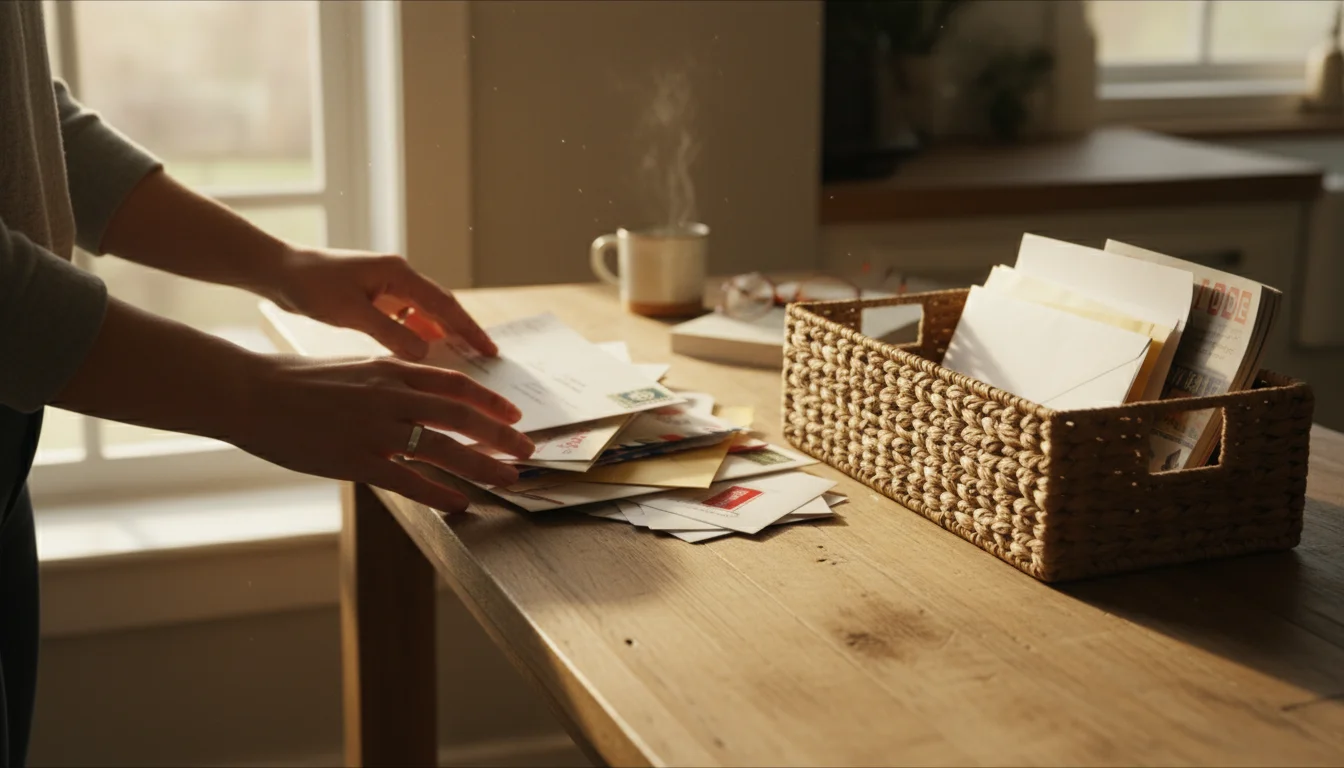
Taming the Incoming Tide: Daily Paper Management
The key to preventing new paper piles lies in consistent, daily management. Without a routine, even the most robust `home filing system` will eventually buckle under the weight of unprocessed documents. Develop habits that intercept and process paper before it can accumulate.
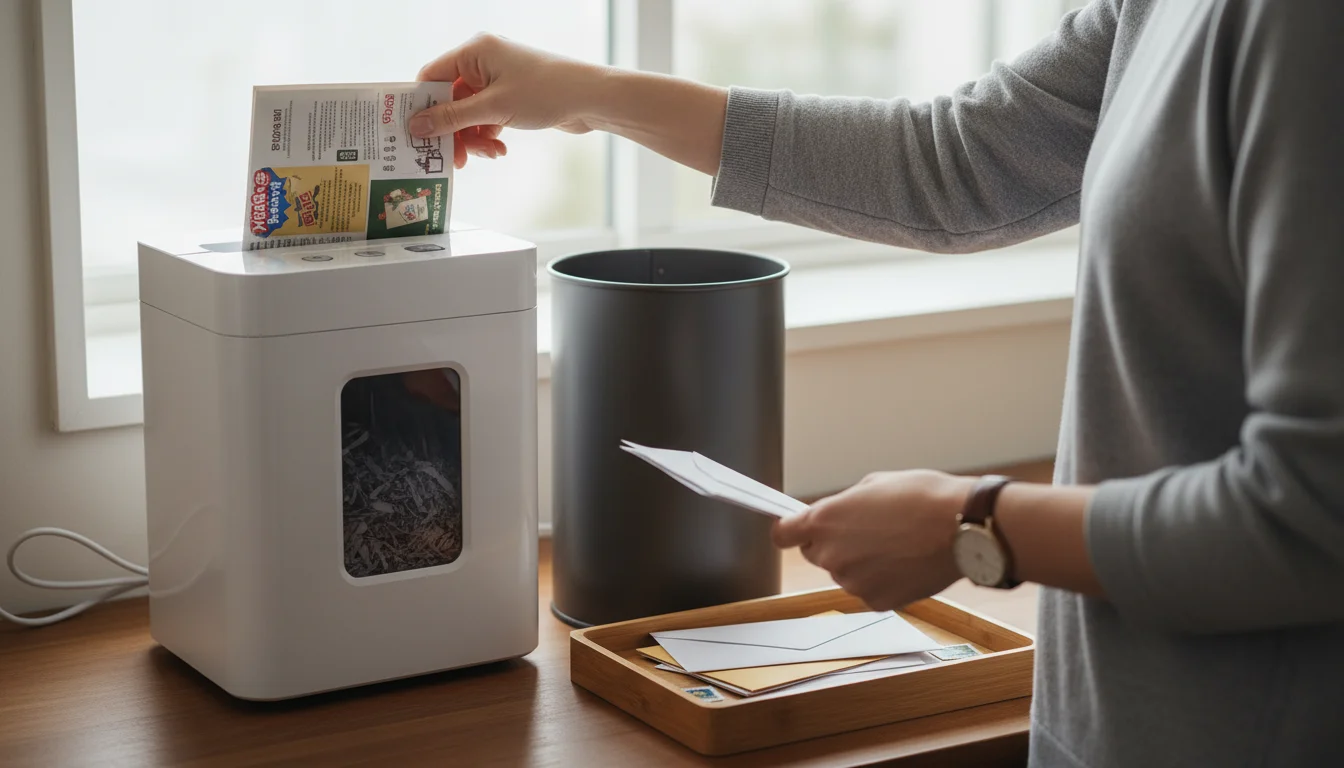
Strategies for Processing New Paperwork
- Designate an “Incoming Mail” Zone: Establish a specific spot for all newly arrived mail, whether a decorative basket, a simple tray, or a dedicated slot near your entry. All mail goes here immediately, preventing it from scattering across surfaces.
- Process Mail Immediately: Commit to processing the incoming mail pile daily, or at least every other day. Stand over a shredder and a recycling bin.
- Junk Mail: Shred or recycle immediately. Do not even open it if you recognize it as spam.
- Bills and Statements: Open, note the due date (or schedule payment digitally), and place in your “Action Center.”
- Magazines/Catalogs: Decide if you truly want to read them. If yes, put them in a dedicated reading pile. Otherwise, recycle immediately.
- Advertisements/Coupons: Keep only those you realistically plan to use, then place them in a designated spot for active coupons.
- Implement the “Two-Minute Rule”: If processing a piece of paper takes less than two minutes (e.g., opening a letter, scanning a document, scheduling a payment), do it immediately. This prevents small tasks from piling up into overwhelming projects.
- Manage School Papers and Artwork: Create a temporary “inbox” for school papers. Sort through these weekly.
- Action Items: Sign forms, add events to your calendar, and return promptly.
- Reference: Keep important school year information (class schedules, contact lists) in a dedicated folder in your `home filing system`.
- Sentimental: Select a few favorite pieces of artwork or special notes to keep. Create a dedicated memory box for these, or take a photo and store it digitally, then discard the physical item.
- Handle Receipts: For business or tax-deductible receipts, consider scanning them immediately and discarding the physical copy. For personal receipts, decide if you truly need them. Many items can be returned without a physical receipt if you paid with a card, as the transaction appears on your statement. For those you keep, have a designated “Receipts” folder.
Consistency is paramount. Five to ten minutes each day dedicated to this routine prevents hours of overwhelming cleanup later. This proactive approach supports your `paper organization` and reduces daily stress.

Building Your Digital Organization Hub
Your physical `home filing system` finds its counterpart in a robust `digital organization` hub. Transitioning documents from paper to digital form offers immense benefits, from reduced clutter to enhanced search capabilities. This section guides you through creating an efficient and secure digital filing system.
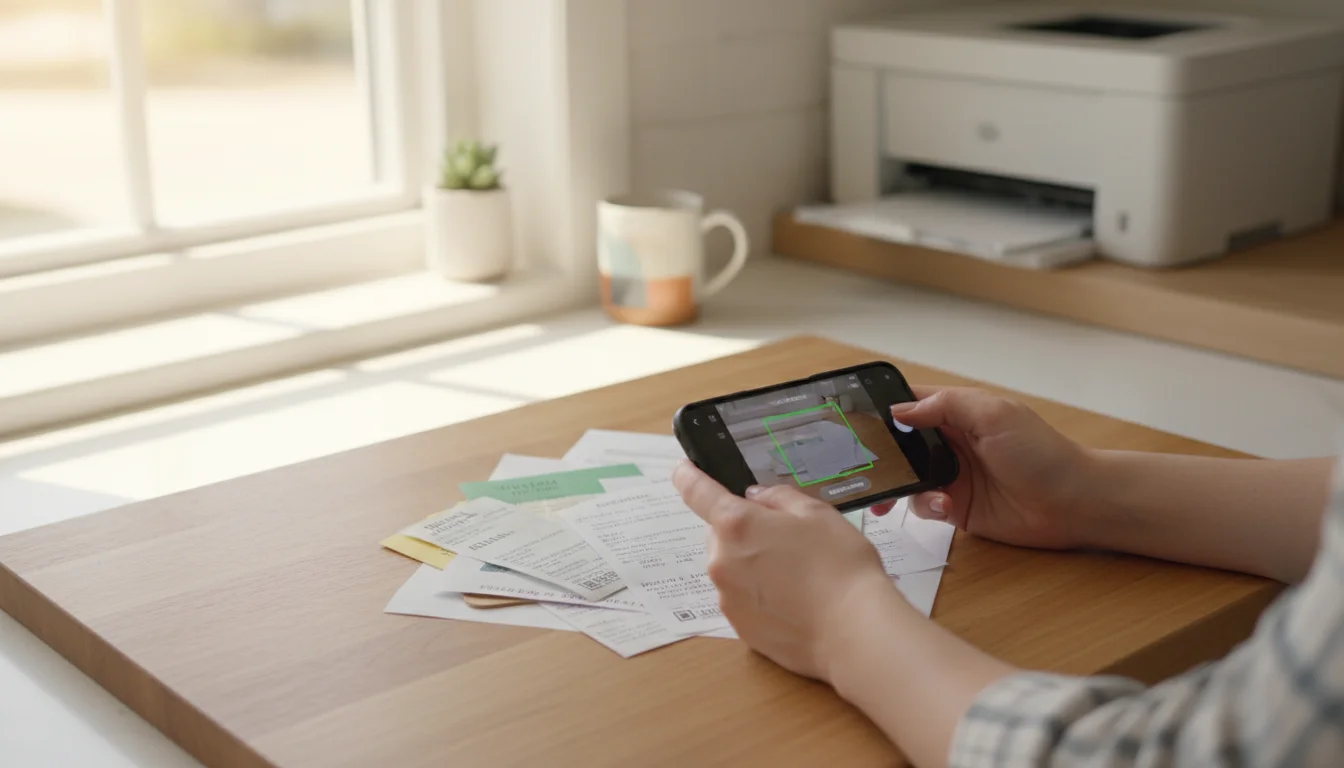
Steps for Creating Your Digital Filing System
- Choose Your Scanning Method: You have several options for converting physical documents into digital files, suiting various budgets and needs.
- Dedicated Scanner: Flatbed or document-feed scanners offer high-quality scans for large volumes of paper. They often include OCR (Optical Character Recognition) software, making scanned text searchable.
- All-in-One Printer/Scanner: Many home printers include scanning capabilities. These work well for occasional scanning needs.
- Smartphone Scanning Apps: Apps like Adobe Scan, Microsoft Lens, or your phone’s built-in camera functions (e.g., iPhone Notes app) allow you to scan documents using your phone’s camera. They often offer basic image correction and PDF creation. This serves as an excellent budget-friendly starting point.
- Establish a Logical Digital Folder Structure: Replicate the logical categories you established for your physical files. This consistency makes it easier to find documents, regardless of their original format.
- Create top-level folders: “Financial,” “Medical,” “Household,” “Personal,” “Taxes.”
- Create subfolders within these: “Financial > Bank Statements,” “Medical > Doctor Visits > John Doe,” “Household > Utilities > [Year].”
Avoid overly deep folder structures (more than 3-4 levels) as they can become cumbersome.
- Implement Consistent Naming Conventions: A consistent naming strategy makes searching and sorting much easier. Consider a format that includes the date, document type, and a brief description. For example:
- YYYY-MM-DD_DocumentType_Description.pdf (e.g., 2023-08-15_BankStatement_CheckingAcct.pdf)
- YYYY_Company_DocumentType.pdf (e.g., 2023_UtilityCo_ElectricBill.pdf)
Always save documents as PDFs for universal compatibility and to preserve formatting.
- Select Your Storage Location: Choose a storage solution that balances accessibility, security, and your budget.
- Cloud Storage: Services like Google Drive, Dropbox, iCloud, or OneDrive offer accessible, automatically backed-up storage. They allow you to access files from any device. Ensure you understand their security protocols and use strong, unique passwords.
- External Hard Drive: Provides local backup and greater control over your data. You still need to back this up regularly, perhaps to a second external drive or a cloud service, to protect against hardware failure.
- Combination: Many people use cloud storage for active documents and an external hard drive for archival purposes or sensitive backups.
- Prioritize Digital Security: Digital convenience comes with responsibility.
- Strong Passwords: Use complex, unique passwords for all your cloud storage accounts and digital devices. Consider a password manager.
- Two-Factor Authentication (2FA): Enable 2FA on all accounts that offer it. This adds an extra layer of security.
- Encryption: Some cloud services or external drives offer encryption. This protects your data even if unauthorized individuals gain access to your storage.
- Regular Backups: Schedule automatic backups for your digital files. For local storage, manually back up to a second location frequently.
Once you scan a document and verify its readability and correct storage, you can shred the physical original, freeing up valuable space. This disciplined process turns chaotic paper into an organized, searchable digital asset.

What to Keep and For How Long: Records Retention Guide
One of the biggest hurdles in `paper organization` is deciding what to keep and for how long. The fear of needing a document you have discarded often leads to excessive hoarding. However, most documents have a specific retention period. Understanding these guidelines empowers you to confidently shred or delete unnecessary files.
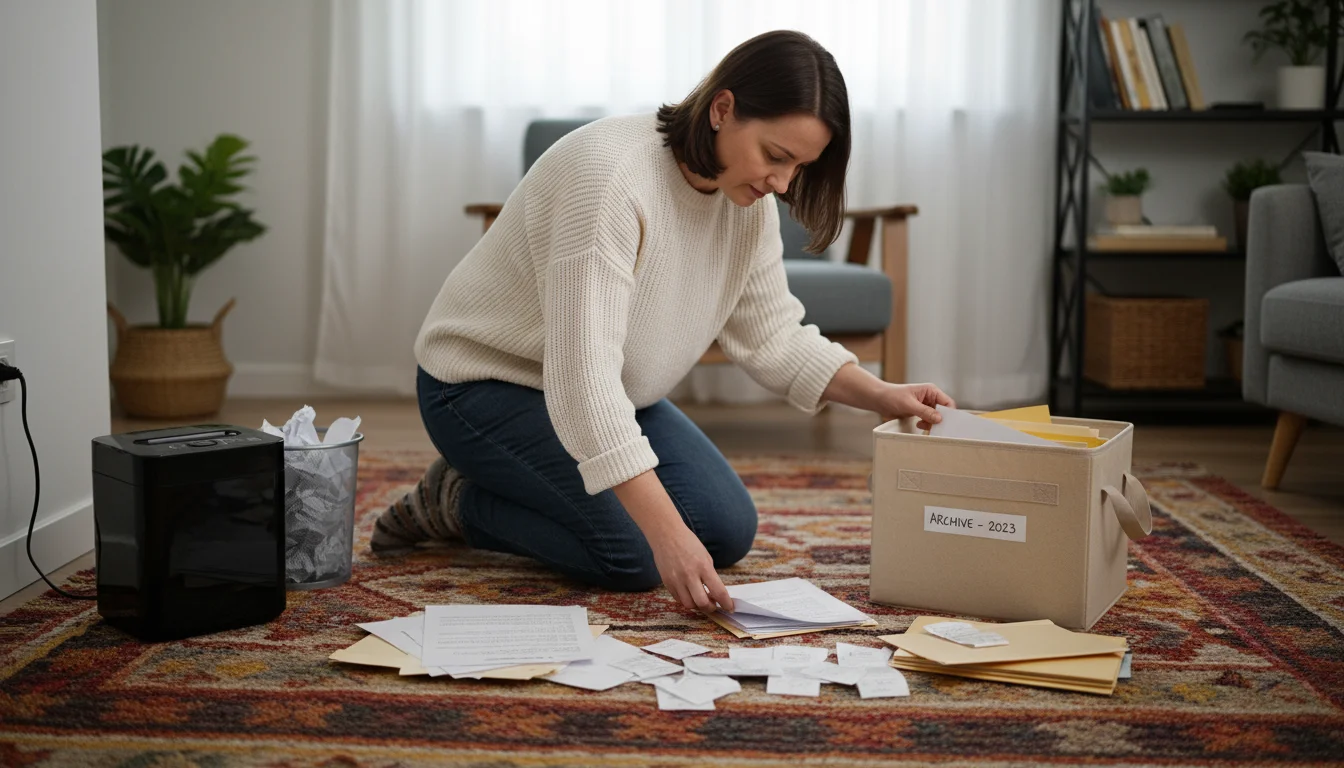
General Guidelines for Common Documents
Always consult a financial advisor or tax professional for specific advice related to your personal circumstances. These are general guidelines:
- Tax Documents (W-2s, 1099s, Receipts for Deductions):
- Physical/Digital: Keep for 3 to 7 years. The IRS generally has three years to audit your return. However, if you underreport income by 25% or more, the period extends to six years. Keep records that support your tax return for seven years if you claim a loss from worthless securities or bad debt deduction.
- Action: After the retention period, shred physical copies and permanently delete digital files.
- Bank Statements and Credit Card Statements:
- Physical/Digital: Generally one year, unless needed for tax purposes or to prove a major purchase. Most banks offer digital access to past statements for several years.
- Action: Review annually. Shred or delete those older than one year unless specifically needed for a longer period.
- Pay Stubs:
- Physical/Digital: Keep until you verify your W-2 or year-end statement. Your W-2 is the most important document for tax purposes.
- Action: After reconciling with your W-2, shred or delete.
- Bills (Utilities, Phone, Internet):
- Physical/Digital: One month, or until you verify payment on your bank statement. Most providers offer online access to past bills.
- Action: Shred or delete monthly. Keep for longer only if disputing a charge or for tax deductions (e.g., home office).
- Appliance Manuals and Warranties:
- Physical/Digital: Keep for the life of the appliance. Many manufacturers offer digital versions online, making physical copies redundant.
- Action: Scan and save digitally, then discard the physical manual. Keep original warranty cards for high-value items if required for claims.
- Insurance Policies (Home, Auto, Life, Health):
- Physical/Digital: Keep current policies for as long as they are active. Retain proof of old policies for up to three years after expiration.
- Action: Store in a fireproof safe or secure digital location. Review annually with your agent.
- Medical Records (Explanation of Benefits, Test Results):
- Physical/Digital: Keep for at least five years, or longer for chronic conditions. EOBs prove you paid your portion of a bill.
- Action: Create a dedicated `digital organization` folder for each family member. Shred physical EOBs after five years unless needed for a specific ongoing issue.
- Legal Documents (Birth Certificates, Marriage Licenses, Deeds, Wills, Passports):
- Physical: Always keep original physical copies in a fireproof safe or safety deposit box.
- Digital: Scan copies for backup and easy reference, but never discard the originals.
- Action: Review wills and trusts with an attorney every few years.
- Investment Records:
- Physical/Digital: Keep for as long as you own the investment, plus seven years after selling.
- Action: Maintain a dedicated `home filing system` for these, either physical or digital.
You do not need to keep every piece of paper. Most information is accessible online, or the retention period for physical documents is shorter than you think. This knowledge simplifies your `paper organization` significantly.
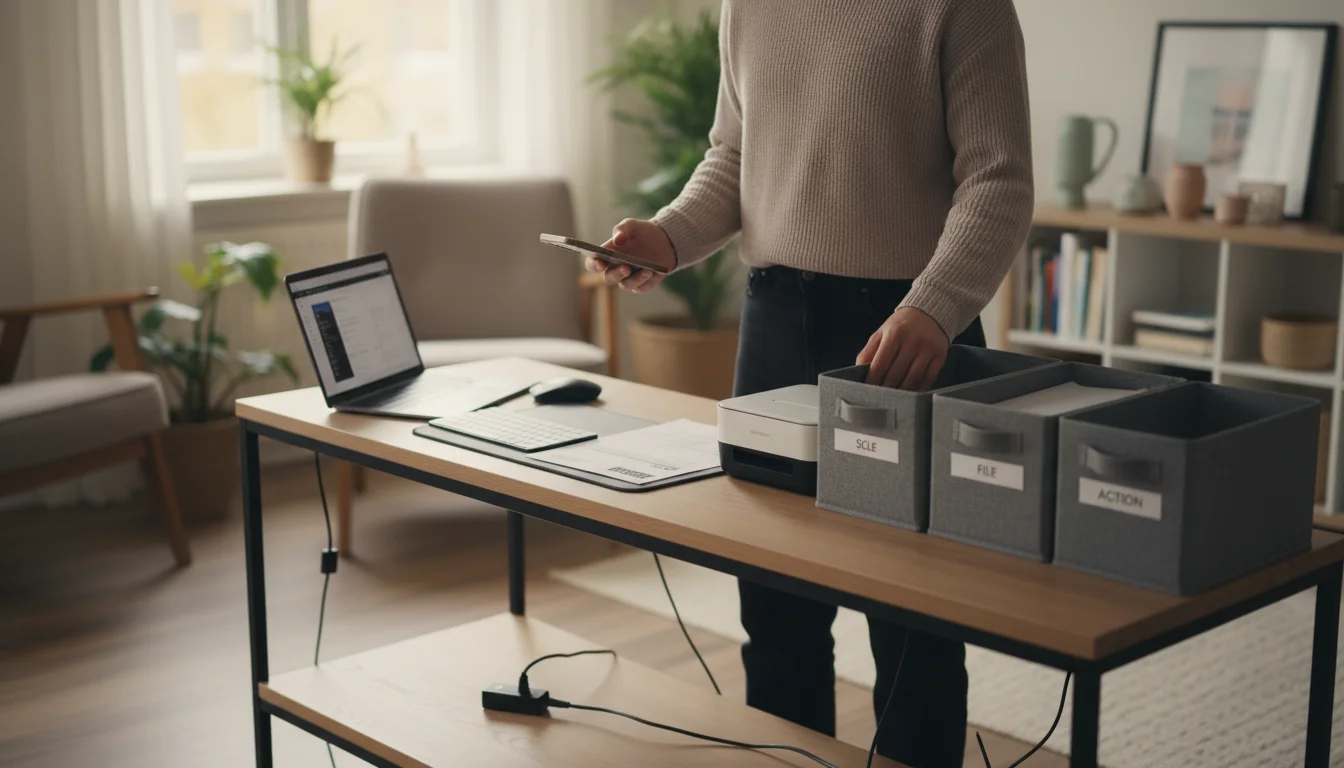
Maintaining Your Digital and Paper Systems
Creating an organized system represents a significant achievement, but sustained organization requires ongoing maintenance. Think of your `digital organization` and `home filing system` as living entities that need regular attention. Implementing consistent routines prevents clutter from creeping back in, ensuring your systems remain efficient and effective long term.

Tips for Long-Term Maintenance
- Schedule Regular Review Sessions:
- Weekly “Reset”: Dedicate 15-30 minutes each week to process your “Action Center” papers, file new documents, and clear your digital desktop. This prevents small tasks from accumulating.
- Monthly “Deep Dive”: Once a month, review your main physical and digital files. Shred or delete documents that have passed their retention period. Check your digital backups.
- Annual “Audit”: At least once a year, preferably before tax season or at the start of a new year, conduct a comprehensive review. Update categories, archive old files, and assess if your system still meets your needs.
- Automate Where Possible: Leverage technology to reduce manual paper handling.
- Paperless Billing: Enroll in paperless statements for bills, bank accounts, and credit cards. Many companies offer incentives for going digital.
- Automatic Payments: Set up autopay for recurring bills to avoid missed deadlines and reduce the need to handle physical invoices.
- Digital Receipts: Opt for email receipts whenever possible. Create a dedicated email folder for these.
- Regularly Back Up Digital Files: Data loss is a major setback. Ensure your digital organization hub is regularly backed up.
- Cloud Sync: If using cloud storage, confirm your sync settings work correctly.
- External Drive: If relying on an external hard drive, schedule routine backups to a second location, either another external drive or a cloud service.
- Test Backups: Periodically test your backups by attempting to restore a file. This verifies the integrity of your backup system.
- Adjust and Evolve Your System: Your life circumstances change, and so should your organization systems.
- New Needs: If you start a new job, have a child, or buy a new house, your `paper organization` requirements will shift. Be flexible and adjust your categories or processes accordingly.
- Simplify: If a part of your system feels too complicated or you consistently avoid using it, simplify it. The goal is ease of use, not perfection.
- Address Common Pitfalls:
- Over-Complication: Do not create too many categories or subfolders. Simplicity fosters consistency.
- Procrastination: The “out of sight, out of mind” trap leads to overwhelming messes. Implement the “two-minute rule” to address small tasks immediately.
- Lack of Tools: Ensure you have a working shredder, labels, folders, and reliable scanning method. Investing in basic tools pays dividends in maintaining order.
Maintaining an organized home filing system and digital organization hub demands consistent effort, but the benefits—reduced stress, regained time, and peace of mind—make it a worthwhile investment. Start small, build habits, and enjoy the lasting comfort of an organized home.

Frequently Asked Questions
What if I do not have space for a filing cabinet?
You absolutely do not need a large filing cabinet. For smaller spaces or budgets, a sturdy file box or a desktop file sorter works wonders. These portable solutions fit on a shelf, inside a cabinet, or even under a bed. Utilize vertical space with magazine files for current papers, or consider a wall-mounted file system. The key involves having a designated spot for paper, not a bulky piece of furniture. Explore creative solutions like decorative bins or baskets that blend with your decor, offering functionality without sacrificing style.
How do I handle sentimental papers like old cards or children’s artwork?
Separate sentimental items from your functional `home filing system`. For children’s artwork, select a few favorites each year, photograph others, and store the chosen pieces in a dedicated memory box or portfolio. For old cards or letters, keep a select few that hold deep meaning. Digitize photographs of these items as a backup. The goal involves curating cherished memories, not hoarding every piece of paper. Be selective, keep what truly brings you joy, and let go of the rest.
Is it truly safe to store all my important documents digitally?
Yes, storing documents digitally can be very safe, often safer than physical storage, provided you implement strong security measures. Use secure cloud services with strong, unique passwords and two-factor authentication. Encrypt sensitive files. Regularly back up your digital files to multiple locations (e.g., cloud and an external hard drive). While physical documents are vulnerable to fire, flood, or theft, digital files offer resilience through backups and encryption. However, always keep original physical copies of essential legal documents like birth certificates and property deeds in a fireproof safe.
Should I print out digital statements and bills?
No, printing digital statements and bills defeats the purpose of `digital organization`. Most banks, credit card companies, and utility providers keep your statements accessible online for many years. If you need a copy for taxes or records, download the PDF directly to your digital filing system. Only print if a specific, rare situation demands a physical copy. Embracing paperless options saves paper, ink, time, and space.
For expert home organization guidance, visit
The Spruce — Home Organization and
Real Simple — Organizing.
Disclaimer: This article is for informational purposes only and is not a substitute for professional advice. Consult professional organizers or specialists for personalized recommendations.

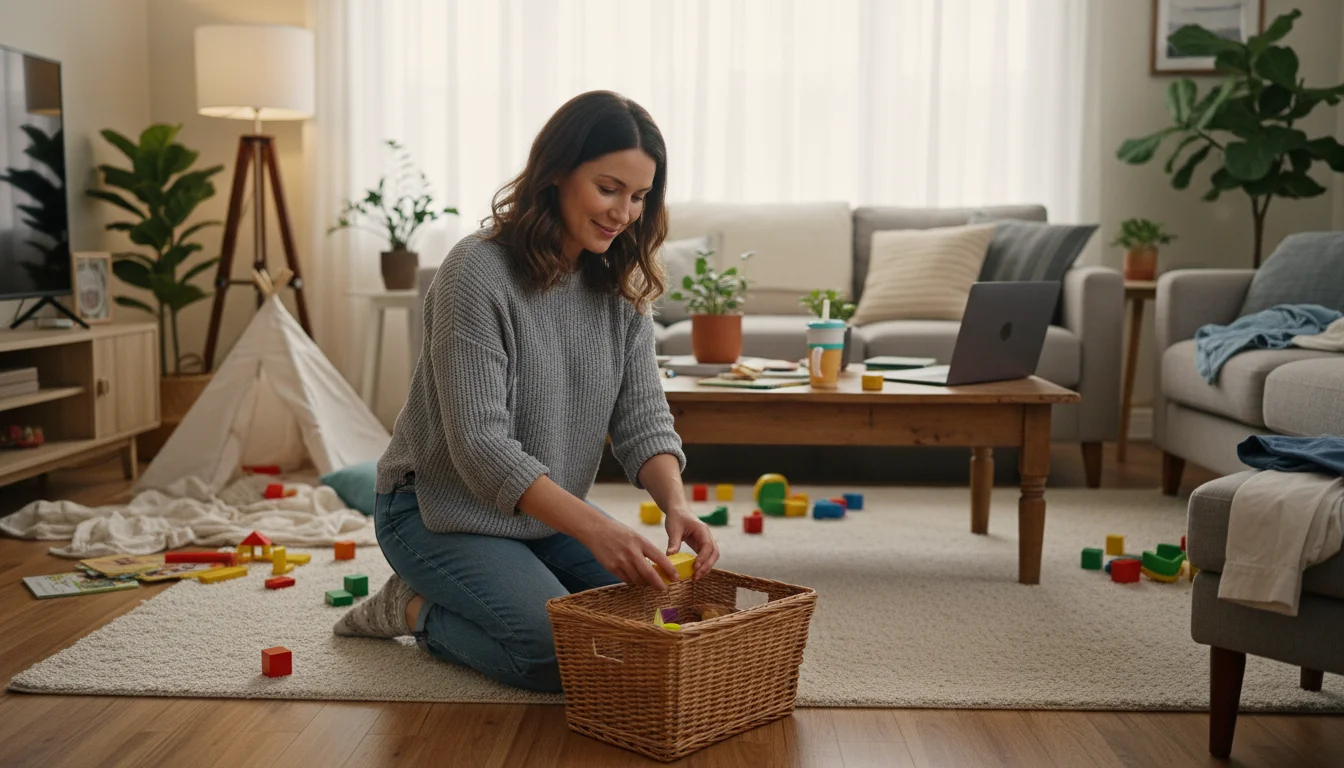
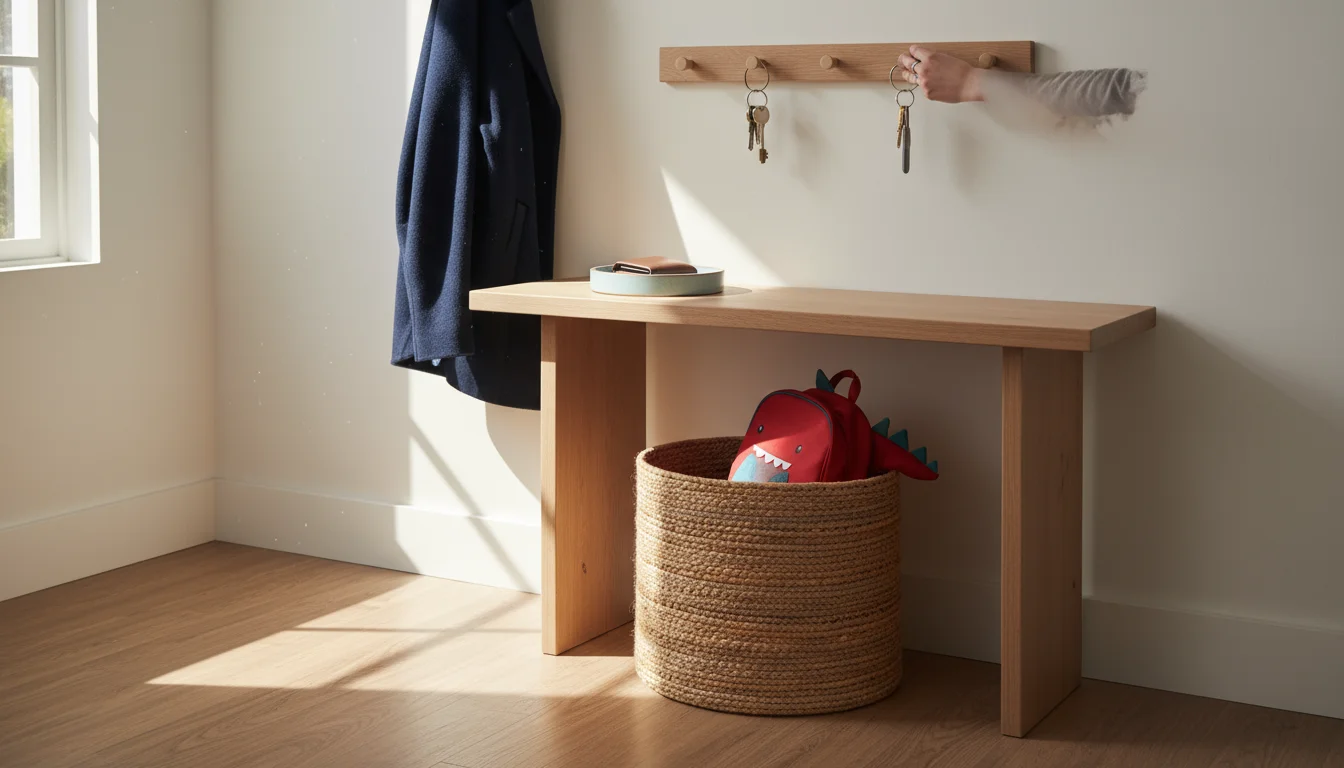






Leave a Reply